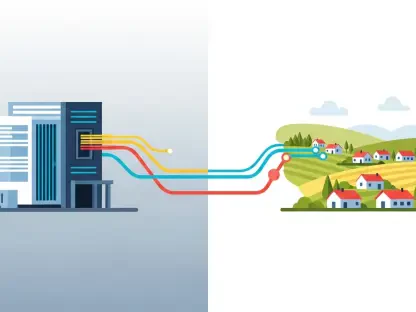Has the arrival of satellites begun overshadowing cables in India’s quest for high-speed internet access? This unfolding drama pits traditional telecom companies against satellite newcomers, sparking intense debate over the future of digital communication in the country.
India’s Digital Dilemma
In recent years, India’s towering demand for reliable, fast internet access has soared to unprecedented levels. As the nation endeavors to integrate technology into every aspect of life—from entertainment to business expansions—the foundation of this transformation lies in broadband infrastructure. Meeting this need carries extensive competitive challenges for established telcos forced to continuously innovate. Concerns now mount that the telcos’ grip on broadband may falter amid burgeoning satellite-driven communication systems, threatening to reshape India’s telecommunications landscape.
Satellite Spectrum: A Growing Concern
The Telecom Regulatory Authority of India (TRAI) has recommended allocating satellite communication spectrum, triggering fears among established telcos. They worry that international entrants like Elon Musk’s Starlink and Amazon’s Project Kuiper may disrupt the balance of power. Starlink’s capacity to deliver vast amounts of data—reportedly exceeding that of local players—poses stark questions about the scale of competition. NGSO satellites promise to revolutionize connectivity beyond traditional constraints, challenging established norms and potentially drawing consumers away from fixed-line networks.
Diverse Opinions and Evidence
The Cellular Operators Association of India (COAI) contends that TRAI’s proposals tilt the competitive scales unfairly in favor of satellite operators. They assert that regulatory imbalances could skew market dynamics, disfavoring local telcos. Expert voices across the spectrum warn of similar international experiences, urging caution and advocating balanced regulation. Case studies illustrate that unchecked satellite growth can erode traditional communication avenues, reaffirming stakeholders’ fears in India—echoes of an emerging global pattern.
Navigating Collaborative Paths
What paths should stakeholders tread to avoid an impending clash? Telcos might explore adaptive strategies that embrace satellite technology. Policy adjustments ensuring equitable resource distribution could foster cohesion. Encouraging collaboration between terrestrial and satellite services offers a viable roadmap toward an inclusive communications ecosystem. MSC service synergy could redefine connectivity standards, even as technological barriers shrink.
Future Reflection and Progress
This saga presents telcos with urgent calls to adapt and innovate. Crafting cooperative frameworks between terrestrial and satellite service providers appears crucial in establishing telecom parity. As stakeholders contemplate viable strategies, pursuing collaborative policies becomes imperative for sustainable growth. Robust communication networks stand poised to both empower users and bolster India’s stature in the global digital sphere. The unfolding events promise profound shifts in telecom landscapes and foreshadow novel possibilities for connectivity advancements.









